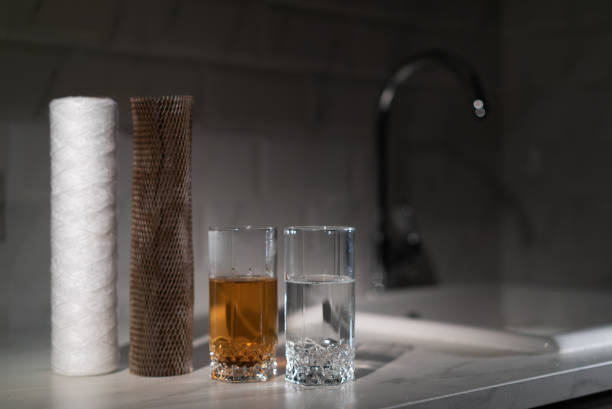
How do I determine which type of filter is the best?
How do I determine which type of filter is right for me? This a question that comes to the mind of many of us, and when searching, we find many types and choices that cause us more confusion. Learn the basics of choosing which type of water filter suits you best.
Factors that can tell you which type of filter is right for you
Material cost for each type
Here, you must pay close attention, as you can choose the cheapest type, but later find yourself stuck in high prices for spare parts. Or you need more equipment or get stuck on frequent maintenance appointments. Therefore, the subject must be studied from all current and future material aspects.
The salts found in the source water
Here comes the role of water quality tests that enable us to determine the components of the water. As the percentage of salts has an important role in determining the type of filter.
If the water has color, impurities, or high salt content, we need a filter type with a higher filter number.
The difference between a 5-stage and 7-stage filter
Here we explain the pros and cons of both types of filters so you can make a decision on which one will work best for your needs.
There are several different types of filters that can be found in a reverse osmosis (RO) system. The most common type of filter is the sediment filter, which is responsible for removing large particles, such as mineral build-up and sediment, from the water. Next is the carbon filter which helps remove chemical pollutants and odors from the water.
There are two additional stages called reverse osmosis membrane. The pre-filter is designed to remove small particles (such as heavy salts and bacteria from the water) before they enter the reverse osmosis membrane. The RO membrane is a type of filter located at the top of the system and removes all harmful particles from the water.
Five-stage systems usually come with two carbon filters pre-stage.
While the seven-stage systems also come with an RO membrane. The benefit of having it in is that it allows for more thorough removal of contaminants from the water. In addition, 5-stage systems typically cost less than 7-stage systems, especially when the filters are replaced every year.
In general, it is recommended that the treatment system contain reverse osmosis to ensure optimal performance. Whether you have a 5-phase or 7-phase system, be sure to replace all three filters every 3-6 months to keep your system running at its best.
What are RO units?
They are units used to purify water and make it clean, free of impurities, sediment, and pollutants through some physical and chemical processes, raising the water quality.
The sizes and shapes of the candles differ, for example, the candles with small pores are used to remove solid physical impurities, and the size of these candles and the diameter of their pores differ from others used to remove gravel and sand. Micro-needling or filtration technology is also used to remove smaller objects.
The 5-stage filter stages
stages
The first candle is made of 3 layers of polypropylene to remove rust, impurities, sand, and plankton. It is changed every 30 days to 90 days from the date of installation.
While the second candle absorbs chlorine, color, taste, and smell in the water.
The third stage is the solid carbon cartridge to become healthy drinking water free from any chlorine, organic and biological materials, and chlorine residue.
The second and third are changed from 2 months to 6 months.
Fourth, activated carbon granules remove the smell just before use.
The fifth stage is the one that adds calcium and magnesium in proportion to what our bodies need.
Fourth and fifth we replace them every year.
installation
Its installation is very easy and does not take much time. It does not require electrical connections or a battery.
The 7 filter stages
The first three stages are the same as the five-stage filter.
In the fourth stage, the water passes through a semi-permeable membrane with very fine porosity. That the pure water part is separated from the rest of the components from excess salts, bacteria, viruses, insects, and other pollutants. Remove harmful salts and dispose of them directly in the drain. Then keep the clean water in the filter storage.
It is a thin, permeable, porous membrane of 0.0001 microns made of cellulose, called a membrane, and is one of the most important filter stages.
They are swapped from one to two years approximately. And it is of great importance.
The fifth stage is the one in which the water is passed through activated carbon, to remove any traces resulting from the storage process, to remove bacteria, unpleasant odors, and gases that change the taste.
The sixth stage is in which the water is treated, and its pH level and calcium are added, as it is necessary for human health.
The seventh is an infrared candle, which in turn resonates with the water molecules.

























